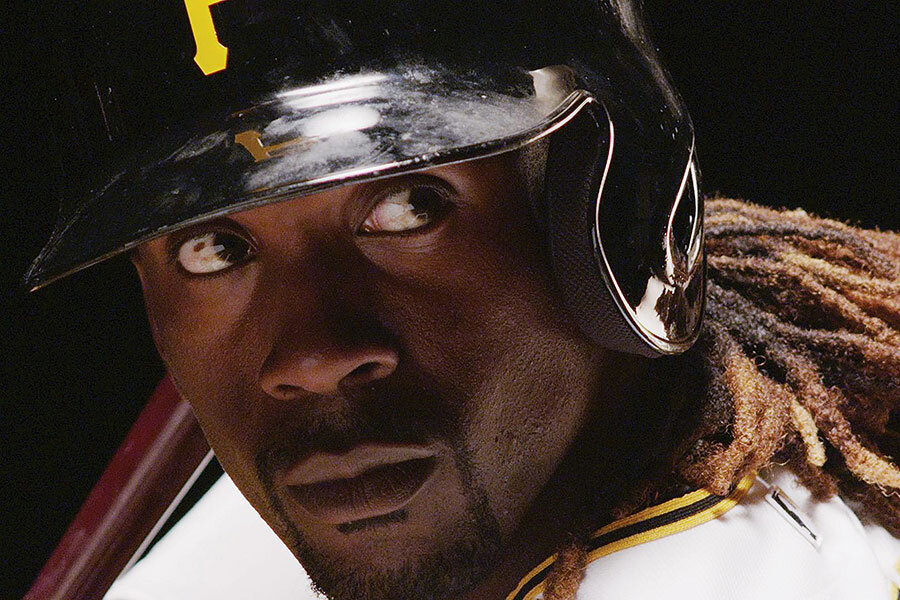'Fastball': The documentary could win over audiences who aren't baseball fans
Loading...
“Fastball” is a documentary for people who like nothing better than watching a pitcher whiff a batter with a high hard one. It might even interest audiences who don’t know a curveball from a medicine ball.
Director Jonathan Hock, a specialist in sports documentaries, makes the case that nothing is quite as satisfying in a ballgame as watching a pitcher unloose lightning. You could equally make the case that home-run sluggers are the real stars of the show, or great fielders. There are plenty of Hall of Fame pitchers who had great stuff without having great heat. But this is all a matter of taste. I was OK, at least for the duration of the film, with Hock’s premise.
He focuses on a gallery of the most celebrated names in fastballdom, starting with Walter Johnson, the “Big Train” of the Washington Senators, so named because batters claimed the whoosh of his fastball sounded like an express train. Johnson, who spent his entire career (1907-27) with the Senators, played in the so-called dead ball era when batters didn’t routinely aim for the bleachers and the game was much more ground level. Even Ty Cobb, the most feared hitter of this era, was intimidated by Johnson. The clips of Johnson hurling look pretty intimidating indeed. As Kevin Costner, who narrates the film, says: “He made the fastball larger than life.”
But how large was it? Baseball being a game of, among many things, statistics, there is always (and will always be) a debate as to who the fastest pitcher of all time is. In Johnson’s day, precise measurements were lacking. The next pitcher from the past that Hock focuses on is Bob Feller, known as “Bullet Bob,” who played for the Cleveland Indians from 1936 to 1956. Feller’s fastball was actually timed, in crude fashion.
In an old newsreel clip, we see Feller, in the 1930s, throw at a target while a policeman on the fastest motorcycle of the day speeds toward the same target at full throttle. The ball gets there first, at somewhere around 86 miles per hour. Later, more scientific calibrations rated his heat much higher.
Other celebrated names are showcased, including, of course, Sandy Koufax, whose delivery, fastball or no, was a thing of beauty. I wish Hock had been able to procure the press-shy Koufax for an interview. He did, however, interview Bob Gibson, who played 17 seasons (1959-75) with the St. Louis Cardinals. Gibson had what is perhaps the greatest pitching year in history, in 1968, when he posted an unearthly 1.12 earned run average and struck out 17 Detroit Tigers in the first game of the World Series, still a series record.
Frank and funny in person, Gibson disparages his reputation for fearsomeness on the mound – he deliberately brushed back batters with close pitches and bean balls – but when the likes of Hank Aaron tells you that he was afraid of him, you sit up and take notice.
Hock also makes room for the legendary Steve Dalkowski, who pitched in the Baltimore Orioles farm system in the 1950s and ’60s but, although he was eventually brought up to the majors, never pitched a game in the big leagues.
Dalkowski was perhaps the fastest of all time – his fastball could split a plank – but he was also one of the wildest throwers. His control problems might have been corrected, but injuries curtailed his career. He was the inspiration for Tim Robbins’s “Nuke” LaLoosh in Ron Shelton’s “Bull Durham.”
Hock brings in a cadre of Hall of Fame batters, including Johnny Bench, Al Kaline, and George Brett, to jawbone about the best pitchers they faced, and he includes a few of the up-and-coming fastballers, like Justin Verlander and Aroldis Chapman (clocked at 100-plus m.p.h.), to round out the mix. He also interviews physicists and cognition experts. (Apparently it is scientifically impossible for a fastball to rise on its way to the plate, contrary to what Gibson and others think.)
Perhaps because his film was made with the cooperation of Major League Baseball, Hock conspicuously avoids any discussion of steroid usage in the modern era, or how that might have affected pitching. You hear nothing about, say, Roger Clemens. The sunniness of “Fastball” leaves out a lot, but watching it can be as pleasurable as an afternoon at the ballpark. Grade: B+ (This film is not rated.)







